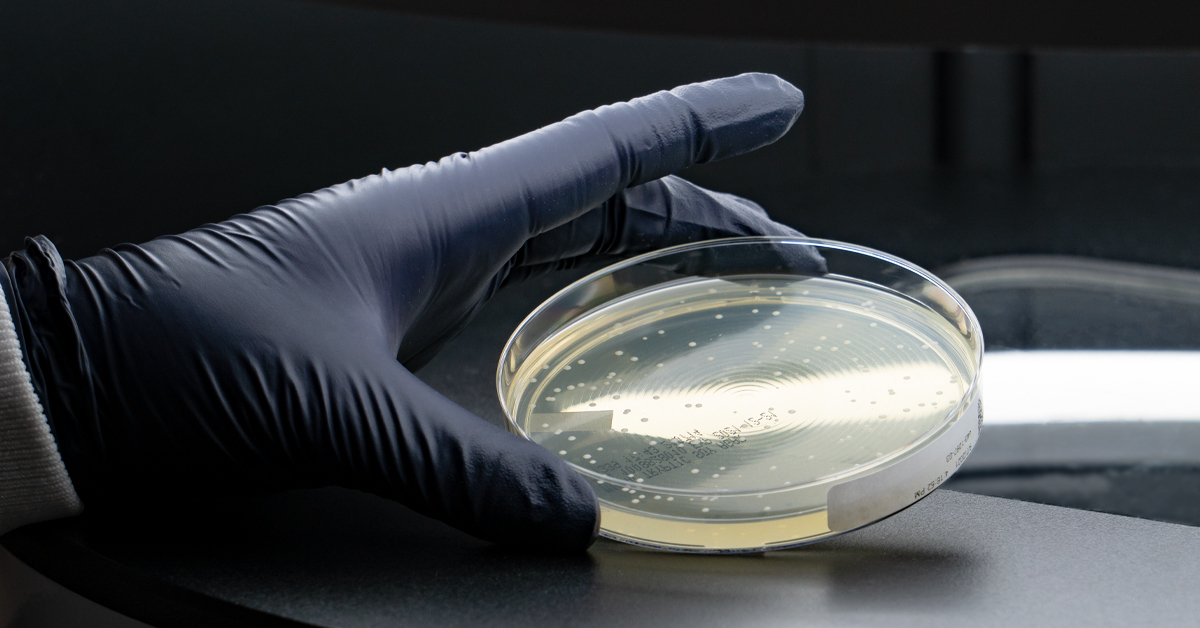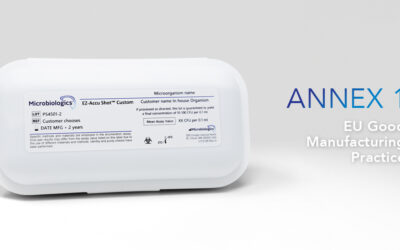Growth Promotion Testing (GPT) is so foundational to Microbiological product safety that it can be easy to overlook. Most industrial microbiologists understand the importance of GPT, but this critical test is sometimes performed incompletely and inconsistently. A sampling of FDA warning letters from the last two years demonstrates the prevalence of incorrect and incomplete GPT across a wide range of laboratories. Microbiologists are performing GPT but not always properly.
Sample FDA Warning Letters Regarding GPT
- November 9, 2020: Warning letter written to manufacturer of OTC drug products as well as wound dressing medical devices:
“Your microbiological test methods used for testing raw materials, and finished products were deficient in that growth promotion studies were not documented or maintained.” - January 22, 2020: Warning letter written to manufacturer of over-the-counter (OTC) products:
“You do not consistently perform growth promotion testing on the in-house media used for microbiological testing of your finished drug products and for water testing to ensure the media supports growth and acceptable recovery…As such each batch of media you use for microbiological testing has not been adequately verified for growth promotion. You cannot ensure that, upon release, your drug products meet acceptable microbiological specifications.” - November 19, 2019: Warning letter written to contract testing laboratory:
“We observed microbiological laboratory records that lacked incubation dates, times, and growth promotion test results for media prepared in-house.” - November 19, 2019: Warning letter written to manufacturer of dietary supplement products:
“You lacked growth promotion testing for your microbiological media.” - October 31, 2019: Warning letter written to manufacturer of OTC drug products:
“Your firm stated to our investigator that you do not perform growth promotion on each lot of prepared media to ensure your plates are suitable for use in microbial testing of incoming components, finished drug products, and your water system.”
Frequently Asked GPT Questions
Want to know more about this important United States Pharmacopeia (USP) test? Below is a list of answers to questions Microbiologics’ customers ask about GPT.
2. Do laboratories need to test every new batch of media?
The USP requires GPT to be performed on each new batch of media whether ready-prepared or prepared from dehydrated media or ingredients.
3. What test strains should I use for GPT?
The USP lists strains for testing media used in the following tests:
- USP <51>, Antimicrobial Effectiveness Testing
- USP <60> Microbiological Examination of Nonsterile Products – Tests for Burkholderia Cepacia Complex
- USP <61>, Microbial Examination of Nonsterile Products: Microbial Examination of Nonsterile Products: Microbial Enumeration Tests
- USP <62>, Microbial Examination of Nonsterile Products: Tests for Specified Microorganisms.
USP <71>, Sterility Tests
Test strains should be no more than 5 passages from the original strain culture.
4. Should environmental isolates be tested?
GPT should be performed on the media used for recovering environmental isolates. It is strongly encouraged, and makes for a better assessment of the microbiological quality of the media if environmental isolates are included with GPT. Some environmental isolates may be objectionable microorganisms making it even more important to show your media can find and grow them if present in product samples. They are objectionable if they will harm the product or the consumer who uses it.
5. How do I create an inoculum equal to 100 CFU or less?
There is a time-consuming method and a quick method. The time-consuming way involves using a spectrophotometer or turbidimeter to obtain the correct concentration. The quick method is to purchase an enumerated product such as Microbiologics lyophilized EZ-Accu Shot which, when hydrated, delivers 100 CFU or less per 0.1 ml.
6. Do I need to test in duplicate?
Although not a pharmacopeial requirement, Microbiologics recommends testing in duplicate at a minimum and averaging the results to obtain accurate results.
7. Should I test in parallel?
Microbiologics recommends testing the new batch of media in parallel with a previously approved batch of media. By testing side-by-side, a laboratory eliminates all variables except the one they are measuring, the media. By testing in parallel, the microorganism suspension, environmental conditions, and technician are the same.
8. What is acceptable recovery for nonselective media used in the Microbial Enumeration Test (<61>)?
Recovery should be no more than 100 CFU on the new batch of nonselective agar.
The number of CFU for the new batch should be within a factor of two of the average number of colonies on the previously approved batch.
9. What is the factor of two?
The factor of two is one half or two times the number of bacteria in the inoculum. If there are 50 CFU in the inoculum, you should recover 25 to 100 CFU.
10. How do I know how many microorganisms I added to liquid media?
Inoculate a non-selective agar plate in parallel with the same suspension used to inoculate the liquid media. The non-selective agar plate serves as a viability control and will tell you how many microorganisms were added to the liquid media.
11. Must I use the factor of two when I test selective media?
No. Often selective media has inhibitory qualities. To meet pharmacopeial requirements, the number of colonies on the new batch of selective media only needs to be comparable to the number of colonies recovered on the previously approved batch. Test a nonselective media such as TSA in parallel with the new and previously approved batches of selective media in order to ensure you inoculated the media with no more than 100 CFU.
QC Microorganisms
When it comes to QC, convenience is critical. Controls that are quick and user-friendly help ensure consistent, accurate results. Microbiologics offers four unique QC microorganism products designed specifically for GPT that provide 10-100 CFU per 0.1 ml of hydrated suspension as required by USP guidelines.
|
|
||||
|
Available Strains |
5 compendial strains plus E. coli in 1 kit* |
42 licensed, traceable |
24 licensed, traceable |
26 licensed, traceable |
|
Number of Tests |
|
|
|
|
|
Hydration Fluid (Included in Kit) |
Equilibrate to room temperature |
Equilibrate to room temperature |
Pre-warm hydrating fluid 30 minutes |
Pre-warm hydrating fluid 30 minutes |
| Lyophilized Organism Pellet | Use 1 pellet per vial of hydrating fluid to obtain 10-100 CFU / 0.1 ml |
Use 1 pellet per vial of hydrating fluid to obtain 10-100 CFU / 0.1 ml |
Use 2 pellets per vial of hydrating fluid to obtain 10-100 CFU / 0.1 ml |
Use 2 pellets per vial of hydrating fluid to obtain 10-100 CFU / 0.1 ml |
|
Resuscitation of Organism |
Quick-dissolve pellet, no pre-incubation |
Quick-dissolve pellet, no pre-incubation |
Incubate suspension for 30 minutes before inoculation |
Incubate suspension for 30 minutes before inoculation |
|
Dilutions |
No dilution step |
No dilution step |
No dilution step |
1:10 dilution required |
* Check Microbiologics.com for complete strain lists.
Custom Controls for Environmental Monitoring
Microbiologics can simplify GPT for objectionable organisms in your laboratory. Send us your isolates for custom preservation and we’ll create a GPT kit designed for your laboratory with your isolates. Visit our website to learn more.
Sources
- Food and Drug Administration (FDA) Warning Letters. Accessed on August 16, 2021, at https://www.fda.gov/inspections-compliance-enforcement-and-criminal-investigations/compliance-actions-and-activities/warning-letters
- USP-NF 2021
Comments
The readers should be aware that the use of environmental isolates is not a compendia requirement and was not mentioned in any of the warning letters cited in the blog.


 Tony Cundell
Tony Cundell 


